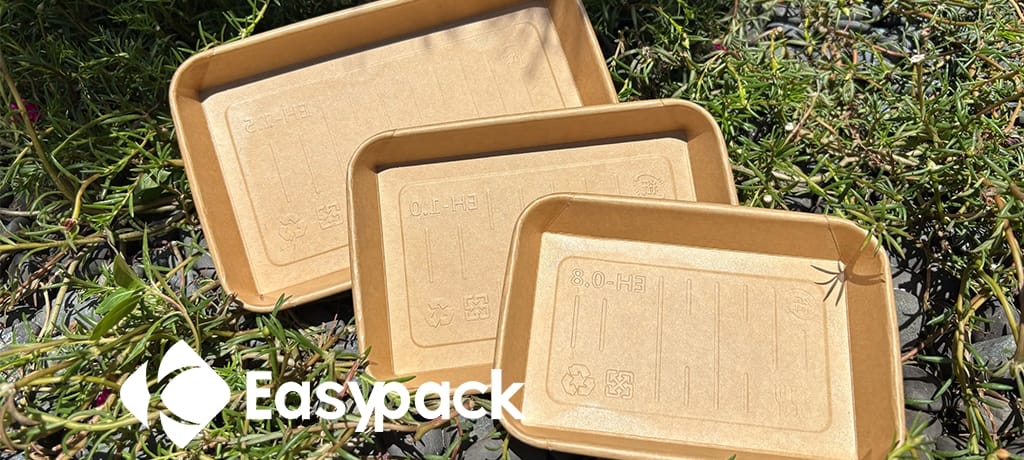Why Sustainability Matters in Food Packaging
In today’s world, food packaging is no longer just about keeping food fresh — it’s about doing it responsibly.
From local cafés to global food chains, more businesses are switching to eco friendly disposable food packaging to reduce plastic waste and meet consumer expectations.
Among these greener options, the kraft paper food box has quietly become a favorite. It’s strong, natural-looking, and designed with the planet in mind. But what makes it eco-friendly, and how does it compare to other sustainable materials? Let’s take a closer look.
What Exactly Is a Kraft Paper Food Box?
Kraft paper is made from unbleached wood pulp through the kraft process, kraft paper stands out for its strength and its naturally earthy brown tone, a color that reflects its eco-friendly nature. The name “kraft,” meaning “strength” in German, reflects its durable nature — a perfect trait for takeaway and delivery packaging.
“With high tensile strength, it offers high tensile strength, providing excellent support for heavy meals and liquids.”
Because it’s made from natural fibers, a kraft paper food box reduce plastic usage while maintaining strong protection, making it a smart choice for restaurants that want eco-friendly solutions without sacrificing quality.
It can also be customized for printing, labeling, or paired with RPET lids for better presentation and functionality.
How Kraft Boxes Support Sustainable Packaging
1. Made from Renewable Sources
Kraft paper comes from responsibly managed forests where trees are replanted and harvested sustainably. Unlike traditional plastics, it doesn’t rely on fossil fuels.
2. Breaks Down Naturally
Our kraft paper is designed to minimize environmental impact by reducing plastic usage. Made with carefully selected materials, it features a natural, minimalistic appearance — perfect for eco-conscious branding and storytelling.
3. Energy-Efficient Production
Producing kraft paper uses less energy and emits fewer greenhouse gases than manufacturing plastic. This makes it a low-carbon alternative for modern food packaging needs.
Comparing Kraft Boxes with Other Eco Friendly and Disposable Food Packaging
Kraft vs Plastic
Plastic containers might be durable, but they come with a heavy environmental cost. Most plastics are non-biodegradable and take centuries to decompose.
Kraft boxes, in contrast, are recyclable, offering a more responsible way to serve and deliver food.
Kraft vs Bagasse and RPET
Kraft packaging also works well alongside other sustainable materials like bagasse (from sugarcane) and RPET (recycled plastic).
- Paper pulp lunch boxes are among the most environmentally friendly packaging solutions. It offers sufficient protection for everyday meals, even though its oil and water resistance may not match coated paper products. Most importantly, its fully biodegradable nature ensures that convenience and sustainability can coexist in harmony.
- RPET containers are great for cold meals and salads, providing a clear, professional look while still being recyclable.
- Kraft boxes complement both, it providing natural aesthetics and strength for everyday meals.
If you want to see these sustainable options, check out:
Real-Life Uses of Kraft Packaging
You’ll often find kraft boxes used for bakery items, sushis, pasta, salads, or lunch sets. Their natural look complements food presentation while communicating a brand’s eco-conscious values.
Many restaurants now combine kraft boxes with eco friendly tableware like pulp bowls, wooden cutlery, and RPET lids to create a complete green dining solution that looks good and feels good.
The Role of Eco Friendly Tableware
Eco friendly tableware supports the same sustainability goal — reducing plastic use and promoting recyclability. When kraft boxes are paired with compostable bowls or recyclable lids, it creates a full system of responsible packaging that fits both delivery and dine-in needs.
Limitations to Keep in Mind
While kraft boxes are excellent for most meals, they are less suitable for very oily or liquid-heavy foods unless lined with a natural coating. They’re also less suitable for long-term storage. Long-term storage or freezer use may also require moisture-barrier reinforcement. Still, their simplicity, strength, and sustainability make them one of the best everyday packaging choices for food businesses.
Choosing the Right Green Packaging
If you’re selecting eco packaging for your brand, here are a few tips:
- Match materials to the type of food— rPET for dry foods with excellent oil and water resistance, bagasse for hot meals with superior heat resistance, and kraft paper for cold and warm dishes as a natural, recyclable, and reduced-plastic option.
- Always check for food-grade and compostable certifications.
- Mix materials strategically — kraft and RPET combinations offer both eco value and functionality.
- Educate customers by adding clear recycling or disposal instructions on your packaging.
Frequently Asked Questions
Q1: Are kraft boxes waterproof?
They can handle light moisture, but for oily and moist foods, coated versions are better.
Q2: Can kraft boxes be recycled?
Yes, clean kraft boxes are recyclable in most paper streams and are also compostable if uncoated.
Q3: Are kraft boxes safe for hot food?
Yes. They’re safe for warm foods (<80°C) and even short microwave reheating.
Q4: How do they compare to plastic?
Kraft boxes are eco friendly and made from renewable materials, while plastics are non-biodegradable.
Q5: Do kraft boxes look professional?
Absolutely. Their natural look has become a popular choice for modern, eco-conscious food brands.
Conclusion: A Greener Future for Food Packaging
So, is the kraft box eco-friendly?
Yes — and more than that, it represents a step toward a more responsible food industry.
By choosing kraft paper food boxes, eco friendly tableware, and other recyclable options like pulp and RPET containers, food businesses can reduce waste and create a stronger, greener brand image.
Explore sustainable packaging solutions with:
Sustainability isn’t just a trend — it’s becoming the standard in food packaging. And kraft boxes are helping lead the way.
Contact us!
